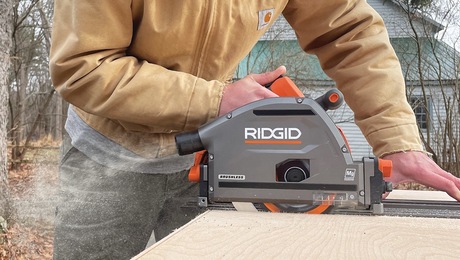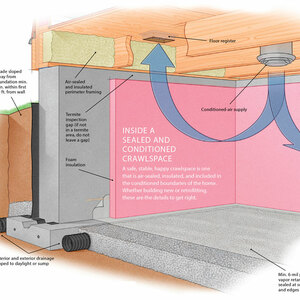I’m restoring an old farmhouse in Michigan. In two of the rooms, the original plaster walls and ceilings were recently given a new finish coat with a dabbled texture. It looks like they swirled around with a putty knife, kind of like frosting a cake. It does not appear to have been painted. Aside from the finish, the walls and ceilings appear to be in good shape. I would like to get back to a smooth flat finish, perhaps by applying a new finish coat of plaster. Any suggestions on how to proceed? How should I prep the existing surface? What sort of plaster should I use? I’ve done lots of patching, but I’ve never been faced with such a large area to be resurfaced. I’m willing to upgrade my skills and have scanned several books on the subject, but none addresses this situation.
Thanks in advance.


















Replies
Scrap-off as much of it as you can. Then rough sad 60 grit. Sweep/ brush off the walls and prime with a good alkyd primer. This will provide a good bonding agent for the new veneer.
Are you going to skim coat the walls with real plaster (what kind) or will you use joint compound?
I'd think that joint compond would be easier to work with. It sounds like I might end up with a reasonably flat surface that would take a minimal coat. It would be nice not to have to come up to speed with the plastering skills.
Jr.,
If it is a latex based texture compound, you may have luck wetting it and using a flat metal scaper to peel it off the old plaster. If it is plaster you won't have much luck sanding it. If you do need to sand, Porter-Cable makes a sander/vac machine that works pretty good at keeping the dust down. Many rental yards carry it but the disks only go down to 60 grit. I got better results from rigging my big 4HP shop vac with a fine dust filter to my Bosch random orbit sander using 40 grit disks. Again, if it is plaster, it'll be tough to sand.
Before I go down this road again, I'll seriously consider strapping the ceiling and hanging blue-board and veneer plaster.
Eric